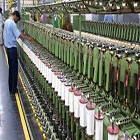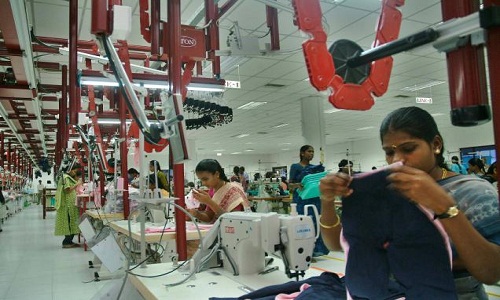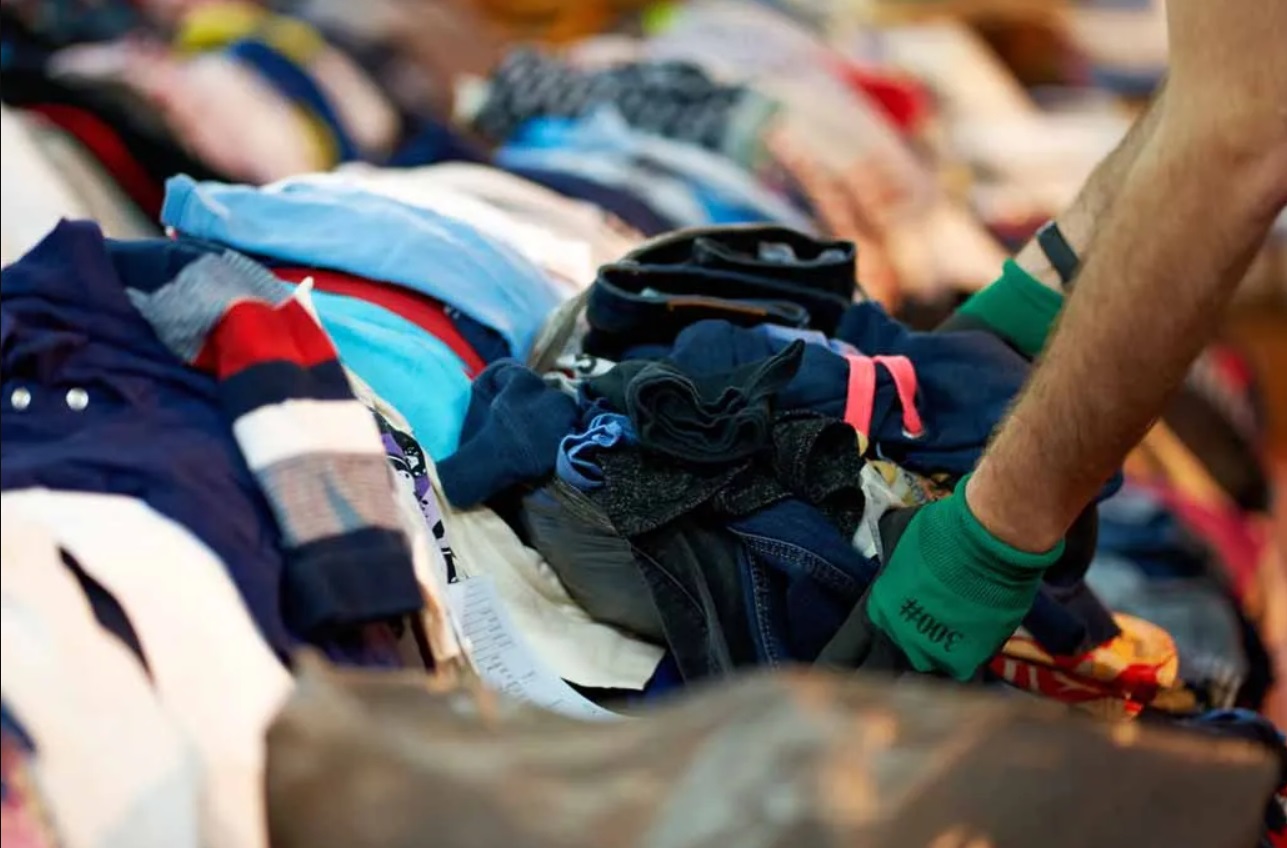FW
The negative outlook on global lingerie giant Victoria’s Secret for this year is unlikely to have a major impact on Sri Lanka’s apparel industry, a major supplier to the high end lingerie brand. Sri Lanka is the largest supplier of products on Victoria’s Secret’s supply chain.
A negative guidance has been announced for Victoria’s Secret for 2017 and the first quarter of 2017, coupled with a mid-teen year-on-year fall in sales from its stores in February, due to a restructuring effort where the lingerie brand will focus on core products, while shedding swimwear, footwear and other apparel.
In 2016, the lingerie giant posted net sales of $12.57 billion, with cost of sales, buying and occupancy of $7.45 billion. Sri Lanka supplies around 800 million dollars out of its $4.7 billion total apparel exports to Victoria’s Secret annually. However, pressure isn’t just coming from Victoria’s Secret. Marks & Spencer’s is converting its clothing and household units into more profitable food units due to competition from online and budget retailers.
Many other traditional retailers are also facing stiff competition. Sri Lanka’s exports to the world declined slightly from September to December 2016, with exports to the US and the EU—which account for 85 per cent of Sri Lankan apparel exports—falling or remaining flat.
The footwear industry hopes that the Goods and Services Tax (GST) will help it come on an equal footing with the apparel industry. While basic customs duty remains the same value added tax for footwear averages at about 14 per cent across the country, and at about five per cent for apparel. Excise on MRP is much higher for footwear.
With glaring dissimilarities in the tax structure, the footwear industry is at a disadvantage compared with the apparel industry. Having a higher excise on footwear makes it harder for the industry to compete with apparel brands, when it comes to consumer wallet share.
The differential in VAT not only escalates the price of footwear but also adds to the cost of compliance, which in turn is ploughed back into the cost. Consequently footwear price becomes non-competitive compared with garments’ price. Footwear is subject to about 12.5 per cent excise duty, which is marked on MRP. The impact of this becomes huge because MRP is usually four times the cost of the product. Apparel on the other hand does not face such high duties.
The footwear industry in India hopes that with GST, multiple levels of taxation, including CST, VAT, excise and octroi, will be eliminated, which will ease the whole tax process to a huge extent and add to bottom lines.
The global textile market is expected to reach approximately 1,237 billion dollars by 2025, driven by population growth in emerging economies including China, India and Mexico.
Product innovation is also expected to have a positive impact on the industry while a growing number of fashion retail outlets and supermarkets in developing economies, including China and India, is expected to increase the textiles demand in the near future.
The Middle East and Africa is expected to witness volume growth at a CAGR of 3.6 per cent from a period of 2016 to 2025. The rising expenditure by Islamic clothing manufacturers to incorporate new hijab styles in apparel is projected to increase the product use over the next nine years.
There is an increasing importance of Environmental Health and Safety systems in the manufacturing sector, owing to stringent regulations aimed at worker safety and reporting incidents in offshore industries, including oil and gas, which is expected to increase the demand for personal protective equipment (PPE). This trend is projected to play a vital role in increasing the market penetration of textiles in the form of technical fabrics in PPE over the forecast period.
Polyester is expected to witness growth over the forecast period due to its superior properties including lightweight and excellent resistance to shrinking.
"The Indian textile industry must move from being a low cost commodity exporter of fibre and yarn that has facilitated China to increase its share in global export market to 39 per cent. The country needs to be a net exporter of finished goods rather than commodity intermediaries to overcome its share of 5 per cent in the global export market. The industry needs to modernise and scale up capacities that would overcome the low manufacturing inefficiencies and be globally competitive."

The Indian textile industry must move from being a low cost commodity exporter of fibre and yarn that has facilitated China to increase its share in global export market to 39 per cent. The country needs to be a net exporter of finished goods rather than commodity intermediaries to overcome its share of 5 per cent in the global export market. The industry needs to modernise and scale up capacities that would overcome the low manufacturing inefficiencies and be globally competitive.
Maintaining competitive edge

Maintaining a competitive edge with rising costs, among other factors of production is gaining significance. C S Nopany, Chairman, Sutlej Textiles and Industries, recently pointed out there has been a sharp increase in cost of raw materials such as cotton and man-made fibres globally. Currently, cotton fibre, yarn and fabrics account for 32 per cent of India's exports, which are lower in value. Garments at 39 per cent, man-made textiles at 14 per cent, handlooms and handicrafts at 11 per cent and the rest at 4 per cent, account for the balance textile exports from India.
Government estimates, the sector needs $180-200 billion investment for achieving the desired production scale by 2024-25, which remains a formidable challenge. The essential prerequisites for getting investments on the scale required, would be to ensure ready availability of developed land for mega textile parks with adequate infrastructure, skilled manpower and easy connectivity to ports.
Investments also need to be supported by additional productive and skilled manpower; it's the only way to achieve global competitiveness and to derive the full benefit of demographic and wage advantage that India would clearly have over the next decade. So far, investment in improving skills and productivity of the workforce, by both the private sector as well as the government in alliance, is not yet at par.
Encapsulating growth
The objective should be to achieve average per man-hour, per machine output in terms of quality and quantity of levels prevailing in China over the next three to five years with the PM 's vision of Make in India with `Zero Defect, Zero Effect' at each level of the value chain. Dipali Goenka, CEO & Joint MD, Welspun India feels Make in India has been a huge success in attracting investments and augmenting manufacturing that has resulted in job creation across sectors. This has also created a huge requirement for skilled manpower. The government's initiative to impart skills to the youth, making them employable, is bound to have a multiplier effect and will propel India to the top position in the emerging global economic order.
The European Union and US account for 50 per cent of India's exports hence, there is a need to diversify to new geographies of Japan, China, Brazil and Russia. As Ashok Rajani, Chairman, Apparel Export Promotion Council point out India's ready-made garment exports during April-December of 2016 witnessed a decline of 0.2 per cent compared to the same period in the previous financial year. The market sentiments have been affected due to delays in the rollout of the special package, which was announced for the apparel sector in June 2016 and stagnation in the Europe and US markets.
Value adding enablers
To ensure export destinations are not limited to certain countries, there is a need to undertake an extensive study for a product-mix that can be tailor-made for each major market. It can be executed with a country-specific strategy conducted jointly with the ministry of textiles. From a taxation perspective, the entire value chain of textiles and apparel sector so far is under a differential tax regime that has created needless distortions. However, this will be addressed by the implementation of GST, which will likely create a level playing field for the entire value chain, with the tax slab hopefully being at the lowest rate.
The remaining challenges include certification for genuine handloom and khadi products that would facilitate in adding credibility to the respective brands in the domestic and international market. Finally, the credit availability from the banking system should be made available with longer tenures of eight years as compared to the current five year period, as the life of the machinery is over 20 years, putting considerable pressure on the business in the form of higher annual repayment cost.
Invista has introduced a new high-strength Cordura, made with the company’s T420HT fiber technology. This is the strongest nylon 6.6 fiber Invista has produced. Cordura, which resists abrasions, tears and scuffs—is used for everything from luggage, upholstery and backpacks to footwear, military equipment, tactical wear, work wear and performance apparel.
In addition to Cordura T420HT, Invista will introduce high-strength Cordura denim and Cordura combat wool. The company is working with Cone Denim to introduce Cordura selvage denim and with Artistic Milliners on Cordura combat wool. Invista has also updated its partnership with Woolrich to introduce a new collection of Wool-Dura, which includes both Cordura and Woolrich wool.
Cordura Nyco, a nylon-cotton blend based on the T420HT high-tenacity fiber, is undergoing wear trials for military applications. The durable but lightweight fabrics, including Cordura Nyco Extreme and Cordura Nyco Tactical fabrics, can be used for military uniforms, outdoor apparel and work wear.
This year, Cordura is celebrating its 50th anniversary. The company will launch several new fiber and fabric innovations, new applications, and collaborations. Invista is based in the US. A retro-futuristic collection will include garments made with Cordura combat wool, Cordura denim/tencel blends and Schoeller change and cerasphere coating technologies.
Surat International Textile Expo (SITEX) will be held from tomorrow February 25 to 27, 2017. The aim is to encourage and develop the textile sector in Surat and the south Gujarat region. Around 175 exhibitors from across the country including Ludhiana, Punjab, Maharashtra etc. are participating. But around 80 per cent of textile machinery manufacturers participating in SITEX are from Surat.
Surat’s manmade fabric industry contributes around 40 per cent of the synthetic fabric demand. The exhibition aims to encourage power loom owners to upgrade their machines in order to match international standards and to provide an opportunity to weavers to upgrade their units. The focus is to introduce state-of-the-art textile machinery for the Surat cluster and present Surat as a brand.
The event will have a series of seminars, fashion shows and buyer-seller meets. It’s organized by the Southern Gujarat Chamber of Commerce and Industry. The focus will be on the weaving sector and the introduction of circular knitting machines used by Tirupur, India’s largest garmenting center.
Surat’s contribution to the export of manmade fabrics and garments is negligible. On the other hand, Tirupur, having just 20,000 circular knitting machines, exports fabrics and garment worth Rs 25,000 crores a year.
FESPA 2017 will take place in Germany from May 8 to 12, 2017. This expo will feature the full spectrum of screen, digital and textile print. Suppliers of technology and consumables for screen print have the opportunity to exhibit at FESPA every year, giving them a regular platform to share their ideas and innovations.
Berlin was the host city for FESPA 2007, one of the most memorable editions in the event’s 50-year history, while Munich has welcomed FESPA on four previous occasions, in 1999, 2005, 2010 and 2014, and is a favorite host city with both exhibitors and visitors.
Movement of FESPA exhibitions between host cities improves accessibility for visitors from across Europe and ensures that the geographical make-up of the audience changes annually, helping exhibitors to engage with the widest possible audience of customers and prospects.
The 2017 event is expected to appeal particularly to visitors from northern and central Germany, while also attracting substantial delegations from the Benelux and Nordic regions. Berlin 2007 expanded FESPA’s audience from northern Germany and north-eastern Europe, while FESPA events in Munich typically draw enlarged delegate groups from central Europe and Italy.
FESPA’s global print expo in Europe is complemented by a program of tailored regional exhibitions in Asia, Eurasia, central and south America and Africa, facilitating access to FESPA events for print service providers in these developing markets.
Quantities of Australian wool at auction are starting to show signs of waning. Just over 42,000 bales are expected to be auctioned next week. Prices are expected to remain buoyant, with bidding this week dominated by traders, rather than the market’s large Chinese indent buyers. Finer micron groups are appreciating at a faster rate than their broader cousins, causing the price differentials between microns to further widen.
Better types continue to attract good support and maintain their large premiums over lower spec types. Renewed interest in crossbred market continued this week with most types and descriptions adding a further 10 to 20 cents to the gains recorded last week and 26 to 28 micron posted the largest rises.
The oddment market also had another solid week, with 20 to 30 cent rises in locks and crutchings helping push all three carding indicators to average rises of over 15 cents. The merino fleece market appeared to change track slightly this week as buyers’ attention moved more to the broader 18.5 to 21 micron area. With superfine wools finer than 18.5 micron now 200 cents and more dearer than their broader counterparts, interest from the predominantly Chinese traders turned to what looked like a more advantageously priced type.
During the July-January period of 2016-17 Pakistan’s exports of bed wear rose 5.07 per cent and exports of readymade garments rose 4.17 per cent. Knitwear exports remained almost flat during this period. Machinery imports soared 42.36 per cent. Power generation machinery imports saw a 90 per cent increase over the previous year. Imports of electric machinery and appliances rose 16.14 per cent. In January, machinery imports increased 50.17 per cent over the same month a year ago and rose 14.24 per cent over December 2016.
In July-January, imports continued to surge and were up 13.6 per cent. Import bill of machinery was the heaviest, accounting for almost a quarter of gross imports during the seven months. Imports of fertiliser, insecticides and other agricultural inputs remained flat during the seven-month period.
The textile sector’s export revenue was down 1.54 per cent over the previous fiscal year. In January, textile exports increased 2.73 per cent over the preceding month but decreased 1.3 per cent over the same month a year earlier. The textile industry accounts for more than half of the annual exports from Pakistan. An incentive package has been prepared for export-oriented sectors. The package comprises withdrawal and concessions on customs duty and sales tax on import of cotton and machinery.
Worldwide, the organic personal care market will grow at nearly 10 per cent a year to 2019. There has been a 26 per cent growth in clothing products, a 32 per cent increase in home textiles, and a five per cent growth in baby wear. This is a positive time for organic - from cotton to wool and all other textiles. Organic supply chains are also strengthening and the number of Global Organic Textiles Standard (GOTS) certified facilities increased by four per cent in 2016, the fourth year of growth.
Consumer concerns around pesticide residues are driving interest in organic personal care products, from cotton wool to feminine hygiene and nappies. More and more consumers in the UK are recognising the importance of organic when making purchasing decisions. Overall, the UK organic market is evolving from food into lifestyle and in future there may be greater crossover between people who buy organic food and non-food items, including textiles and health and beauty products.
At the moment, not enough consumers understand the benefits of organic, but when they do, they are willing to pay more. It is essential to come up with one simple definition of organic which can be used across the market. Also, while consumers have a tendency to say one thing, they do another when it comes to making ethical purchasing decisions.












